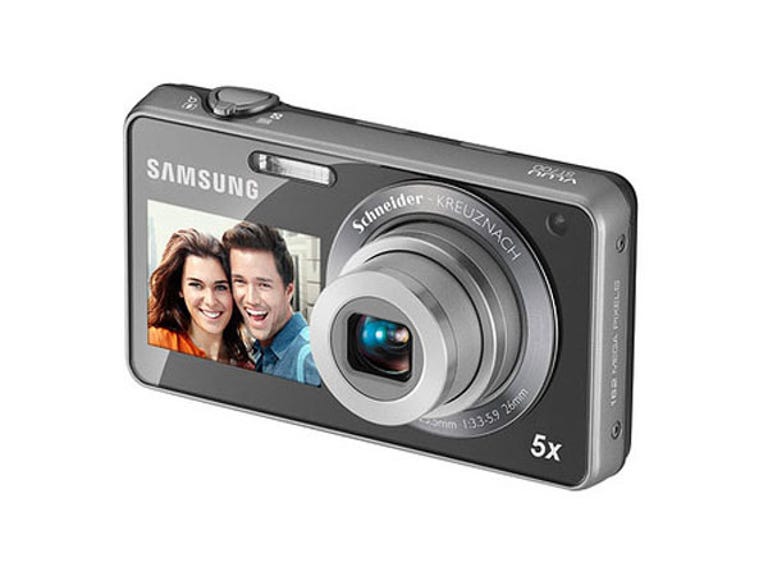 Why You Can Trust CNET
Why You Can Trust CNET Samsung ST700 review: Samsung ST700
The latest dual-screen camera from Samsung offers plenty of bang for your buck, apart from its lacklustre touchscreen.
Design and features
Ever fancied a spot of self portraiture? Samsung is undoubtedly the king of dual-screen cameras (OK, the only player in the market, really) which let you see what you look like in the front screen before snapping the picture. Apart from the dual-screen configuration, the ST700 looks like any other typical compact camera in this price range. It features a 5x optical zoom and a 26mm wide-angle lens, ranging from f/3.3-5.9.
The Good
The Bad
The Bottom Line
Around the back, a three-inch touchscreen (230,000-dots) takes up most of the available real estate, with the exception of a home button that brings the main menu up on the panel. It's a shame that the touchscreen doesn't take a leaf out of the book of earlier dual-screen Samsung cameras. The model on the ST700 is resistive rather than capacitive, which means that it takes a lot more effort to get the screen to register. Hammering the point home even further, the camera comes with a stylus provided in the box. The low resolution makes it tricky to see in bright sunlight, and colours aren't particularly accurate, either.
The main shooting options come up onscreen when the home button is pressed, in an app-style interface that lets you swipe between options. The ST700 has smart auto, program, movie, scene, self-portrait and kids modes to choose from. For the vacuous amongst you, a pose guide is provided, which guides you through a variety of model-like stylings. Within the menus, there are additional filters that can be applied to images, such as vignetting, magic frame, soft focus, miniature and a bunch more. The kids mode displays a colourful cartoon complete with bells and whistles (literally) to make your child smile for the camera.
Unfortunately, the ST700 doesn't come equipped with such luxuries as one might be accustomed to on touchscreen devices — such as touch to focus and pinch to zoom. Connectivity is provided via a proprietary mini-USB port and mini-HDMI port. Like other Samsung compacts, the ST700 uses the easy-to-lose microSD format for storage, which slots in next to the battery at the base of the camera.
Performance
General shooting metrics (in seconds)
- Time to first shot
- JPEG shot-to-shot time
- Shutter lag
Continuous shooting speed (longer bars indicate better performance)
Image quality
The ST700 delivers accurate exposures when there's plenty of natural light, although it is difficult to tell what your photos look like until you display them on a screen — as previously mentioned, the touchscreen is low resolution and not particularly colour accurate. The built-in flash does tend to over saturate colours and emphasise the vivid nature of the ST700's JPEG rendering.
Images taken at the 5x magnification of the lens appear a little soft around the edges, and all photos, when viewed at full magnification, have a fair amount of noise present. Even photos taken at ISO 80 were speckly — a case of there being far too many pixels crammed on such a small sensor.
Video quality is fine for a camera of this class, although the image lacks some sharpness when recording at 720p HD. The microphone picks up sound well without too much ambient noise.
Image samples
Exposure: 1/350, f/5.8, ISO 80 | Exposure: 1/45, f/4.7, ISO 240 |
Conclusion
The latest dual-screen camera from Samsung offers plenty of bang for your buck, apart from its lacklustre touchscreen.


